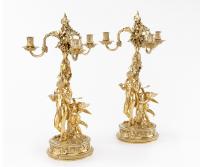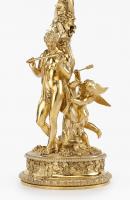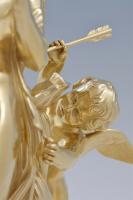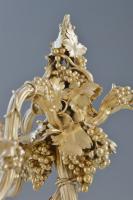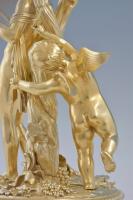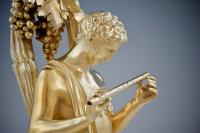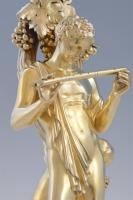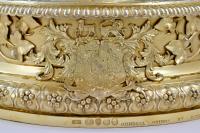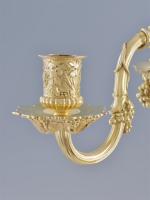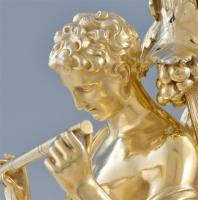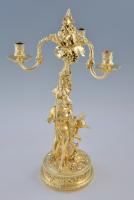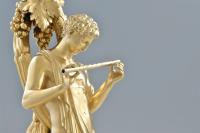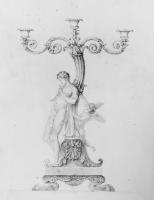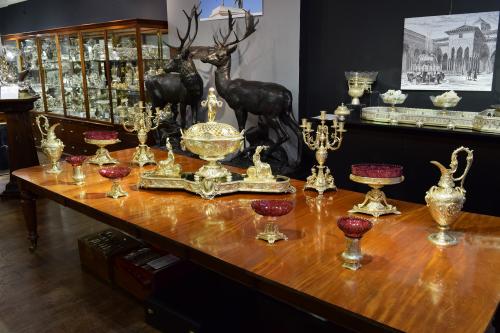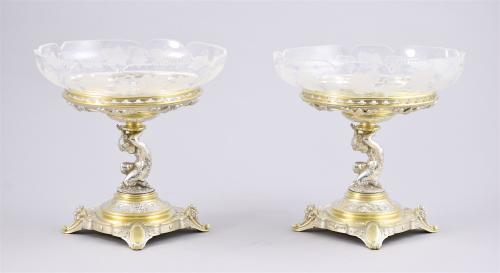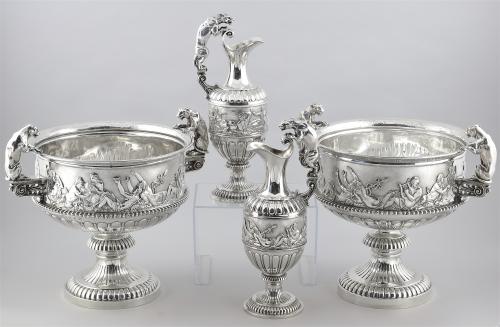
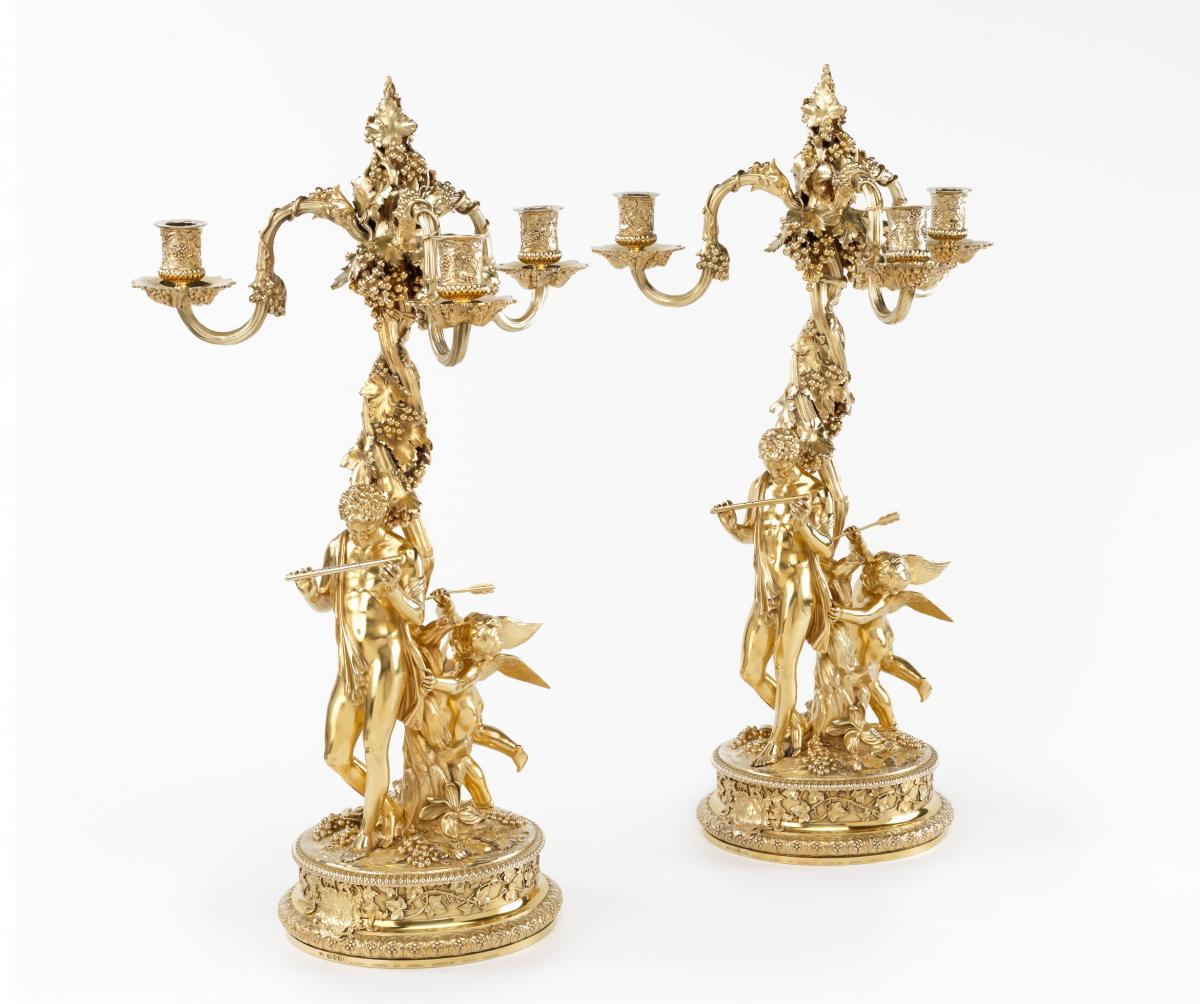
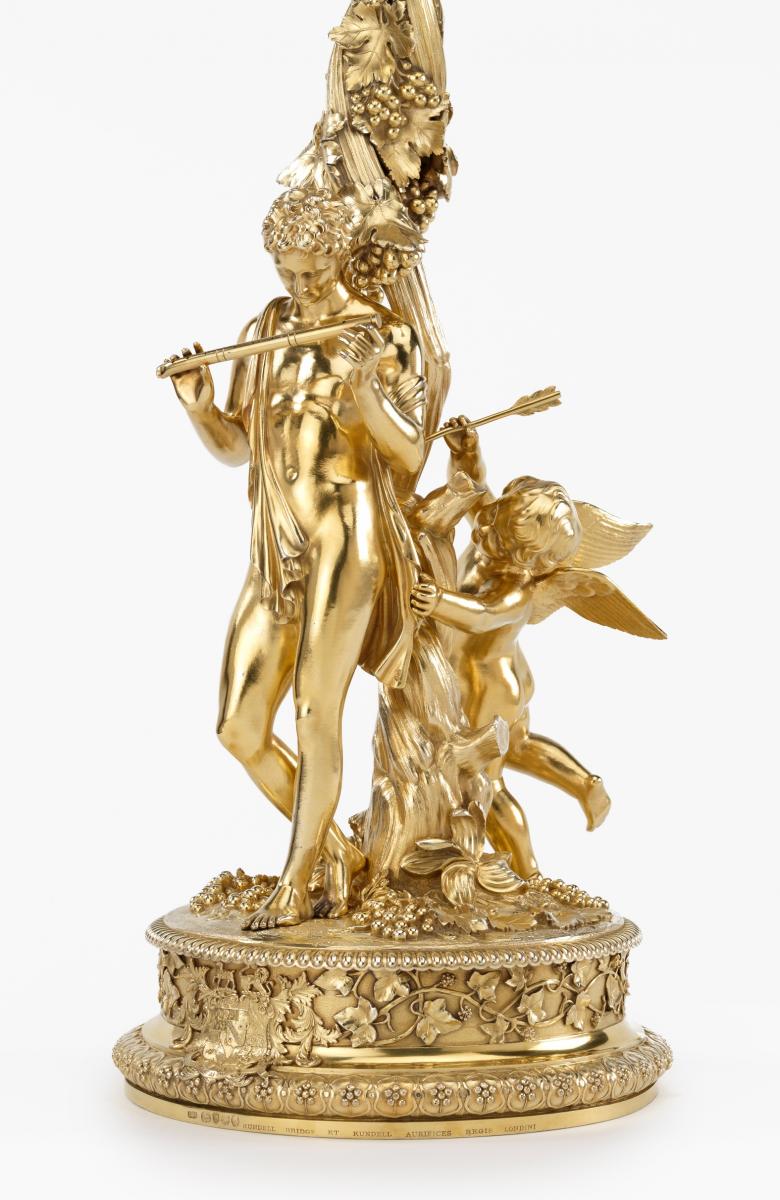
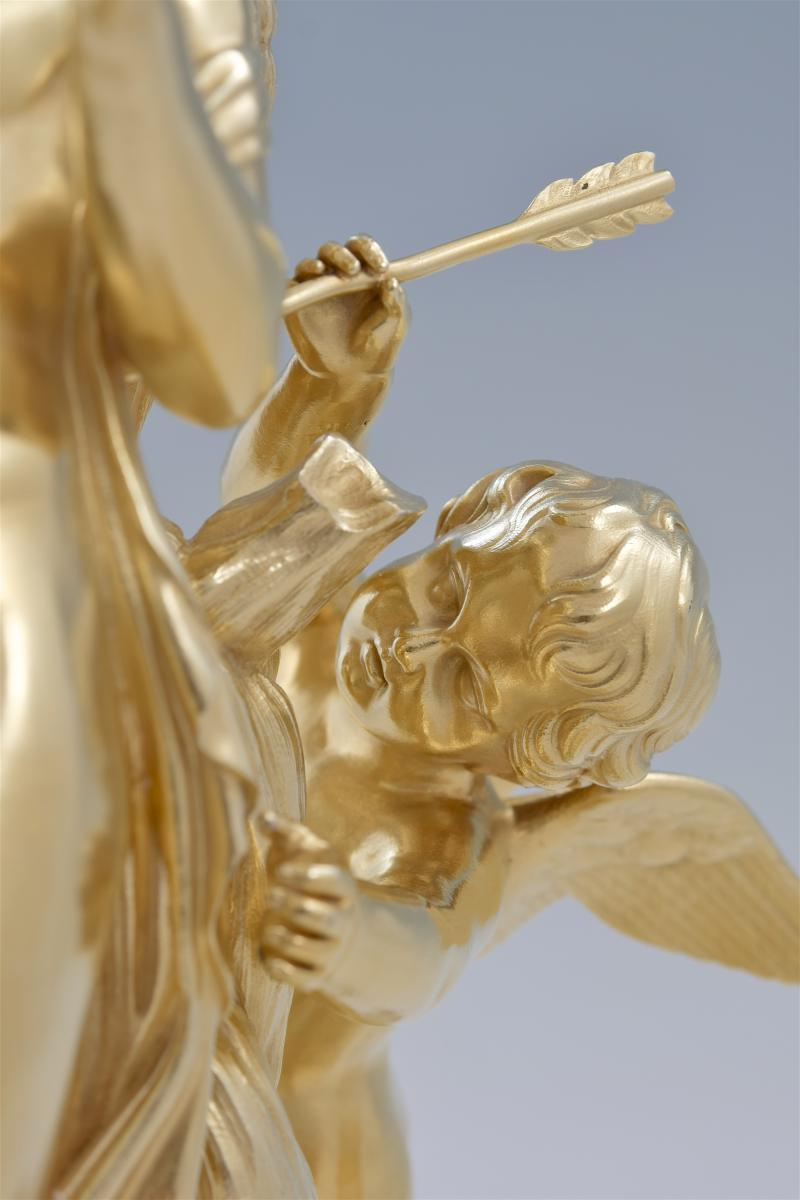
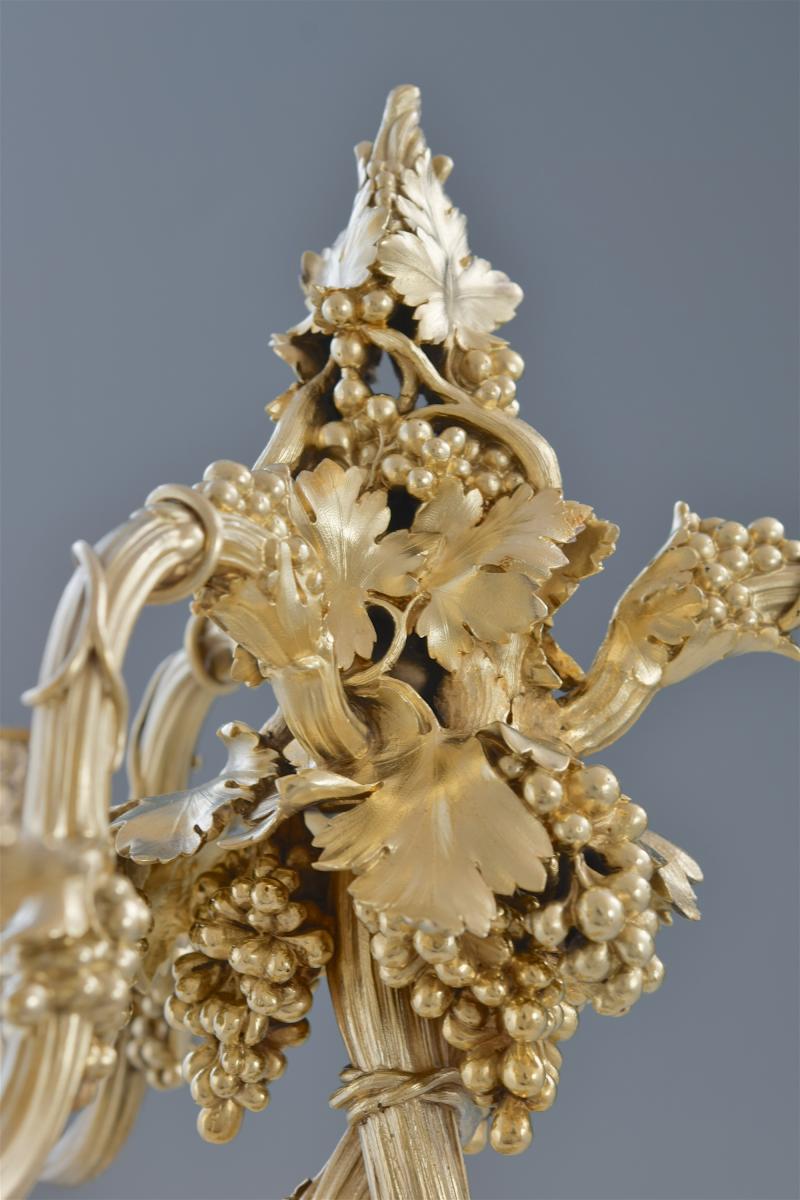
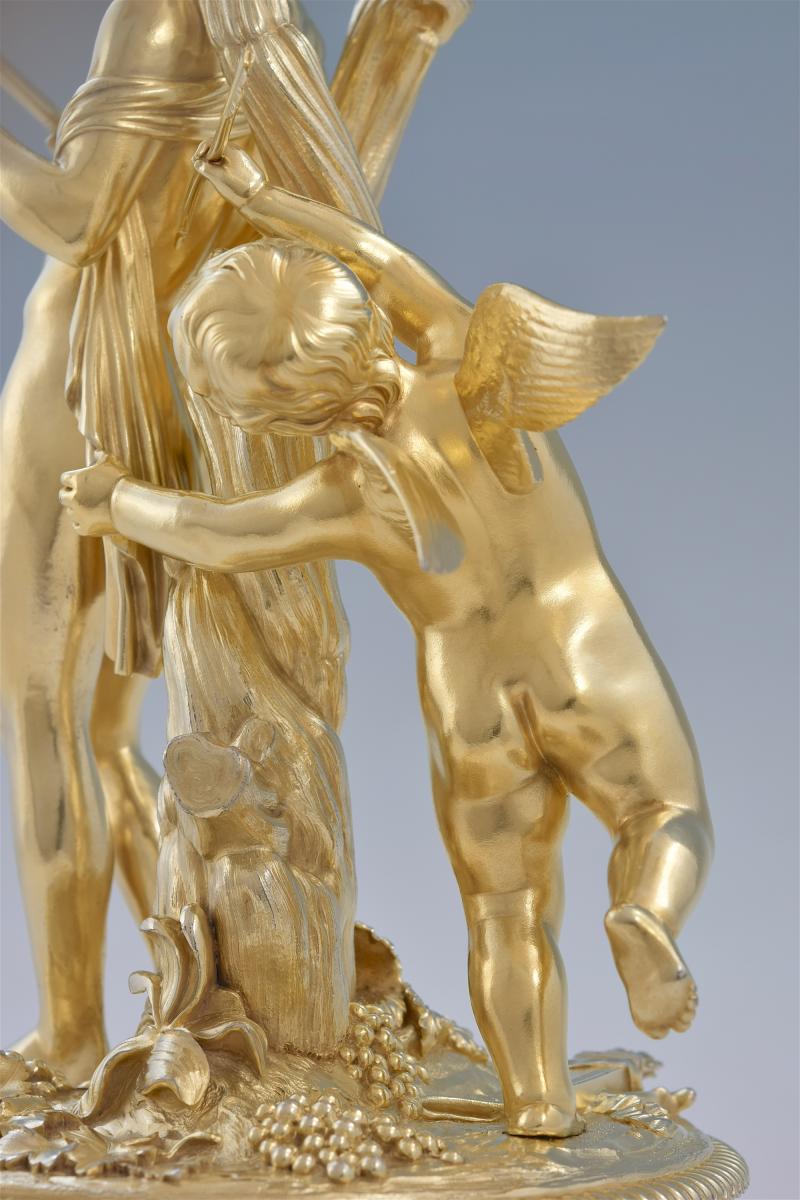
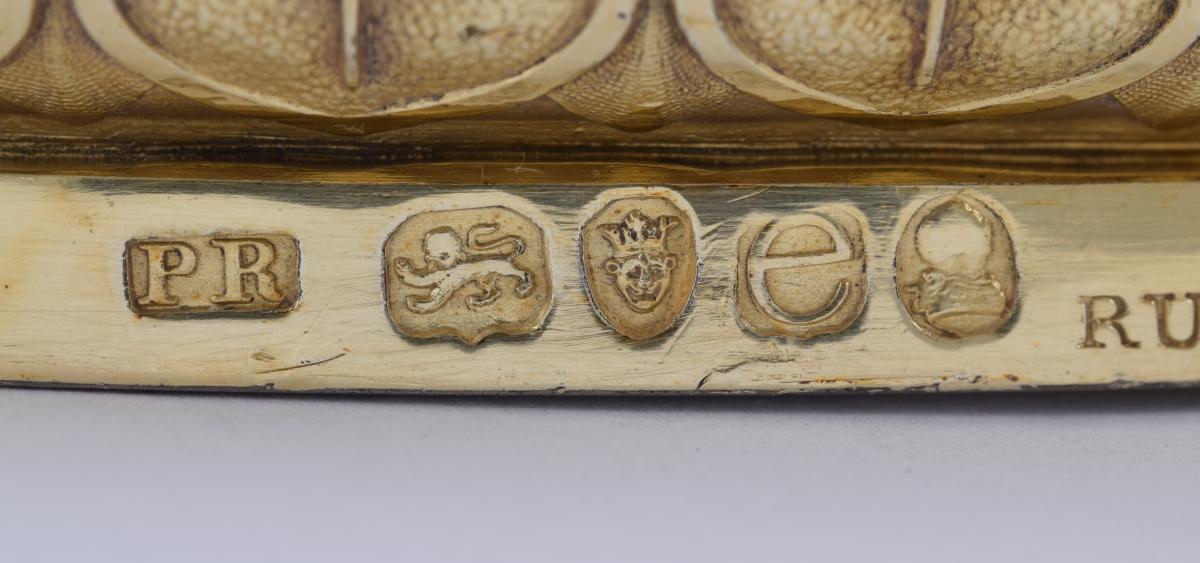
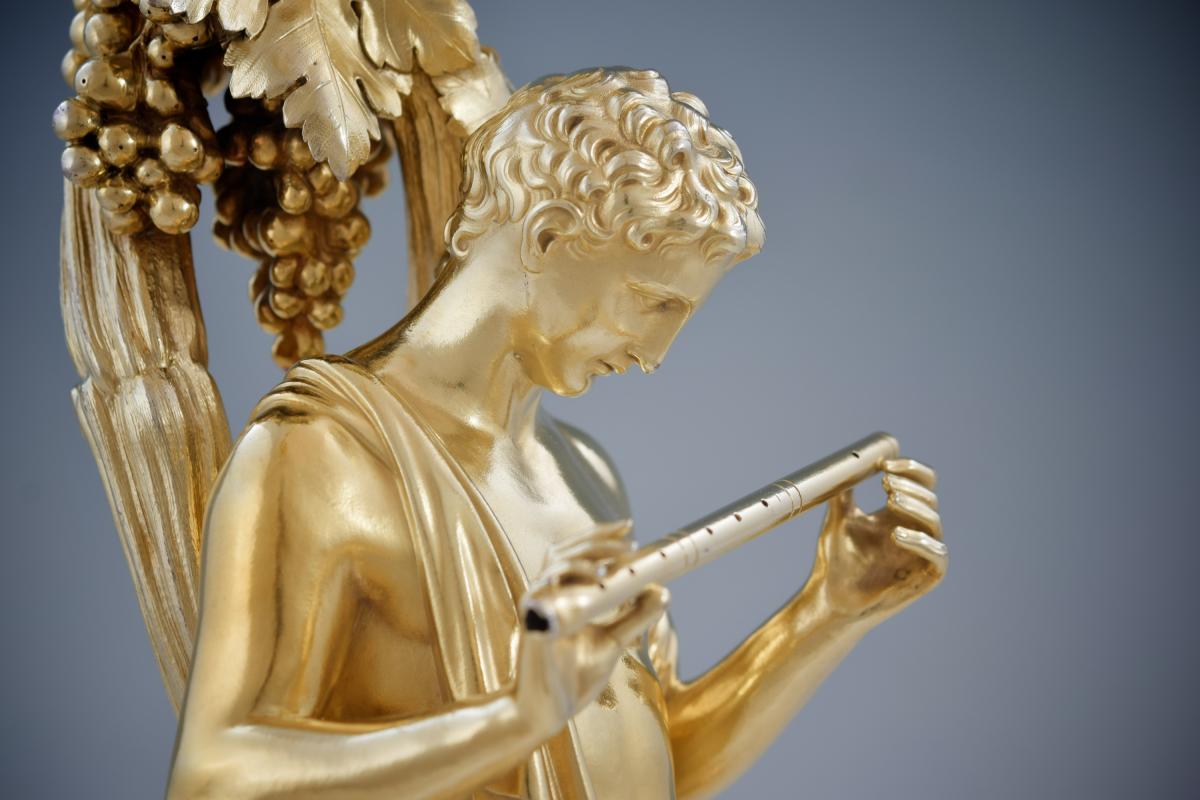
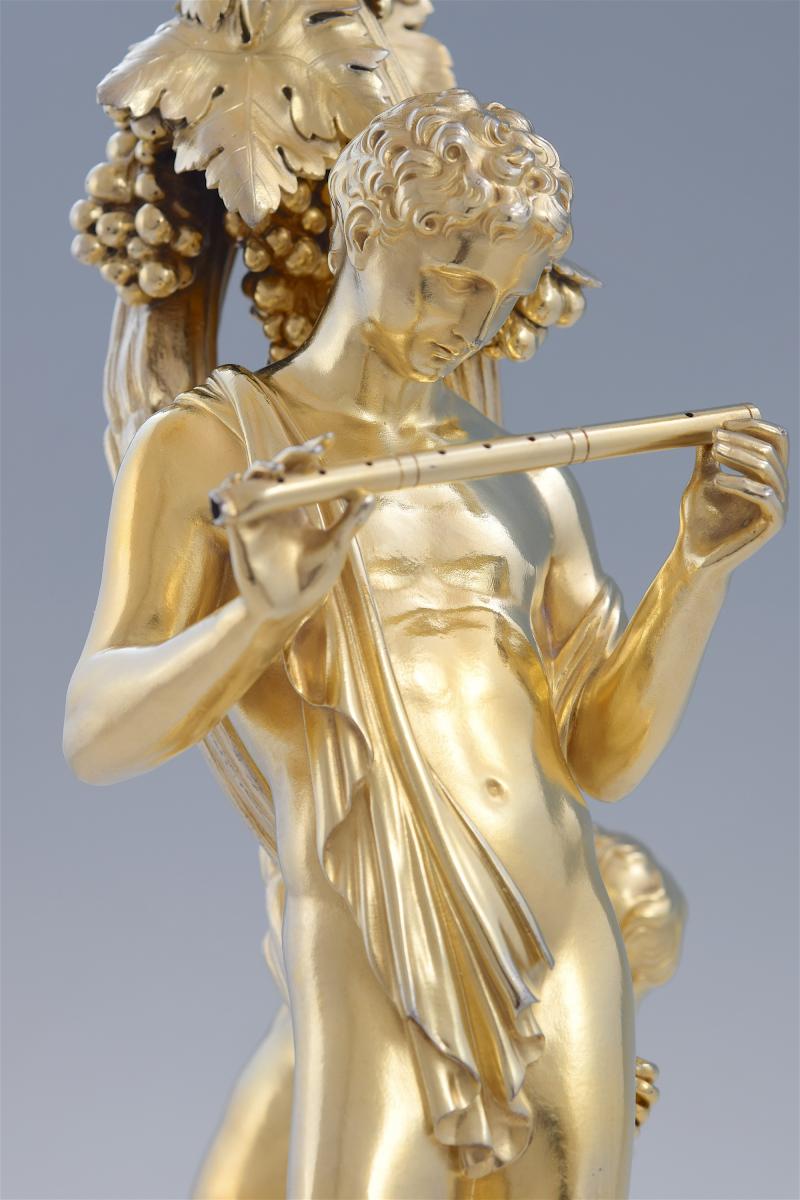
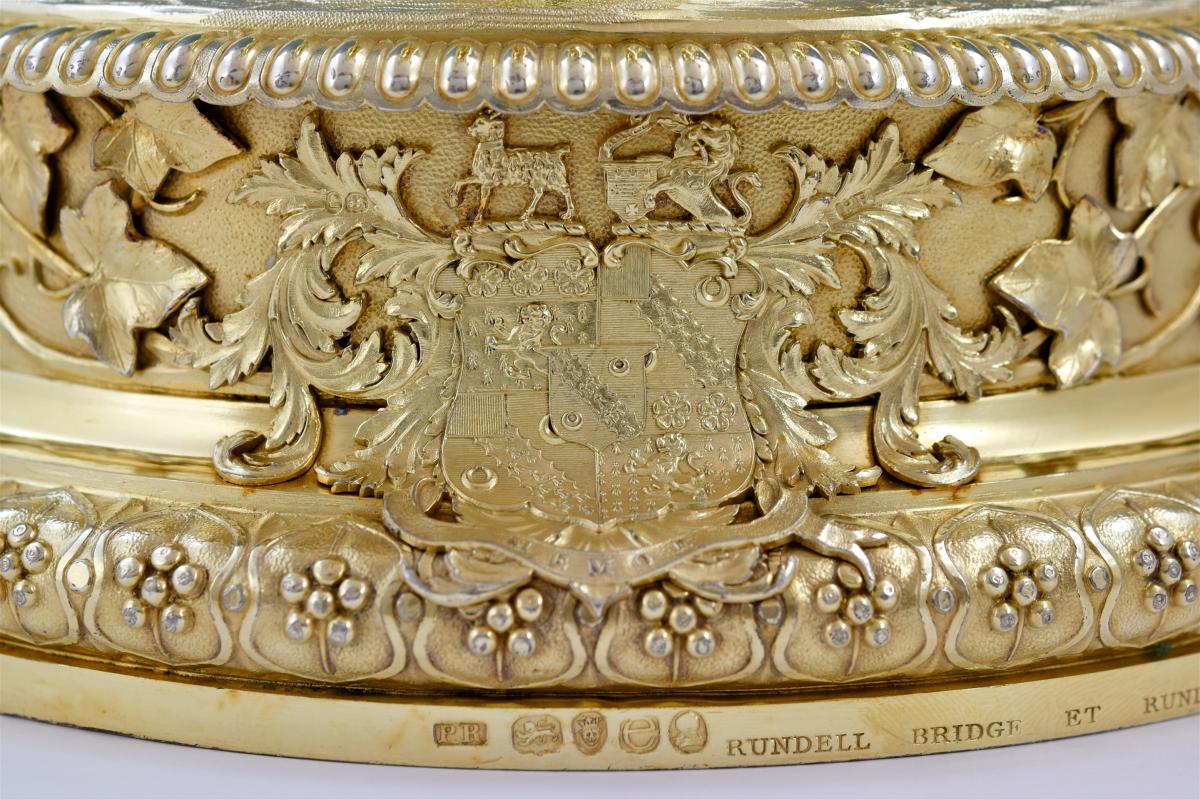
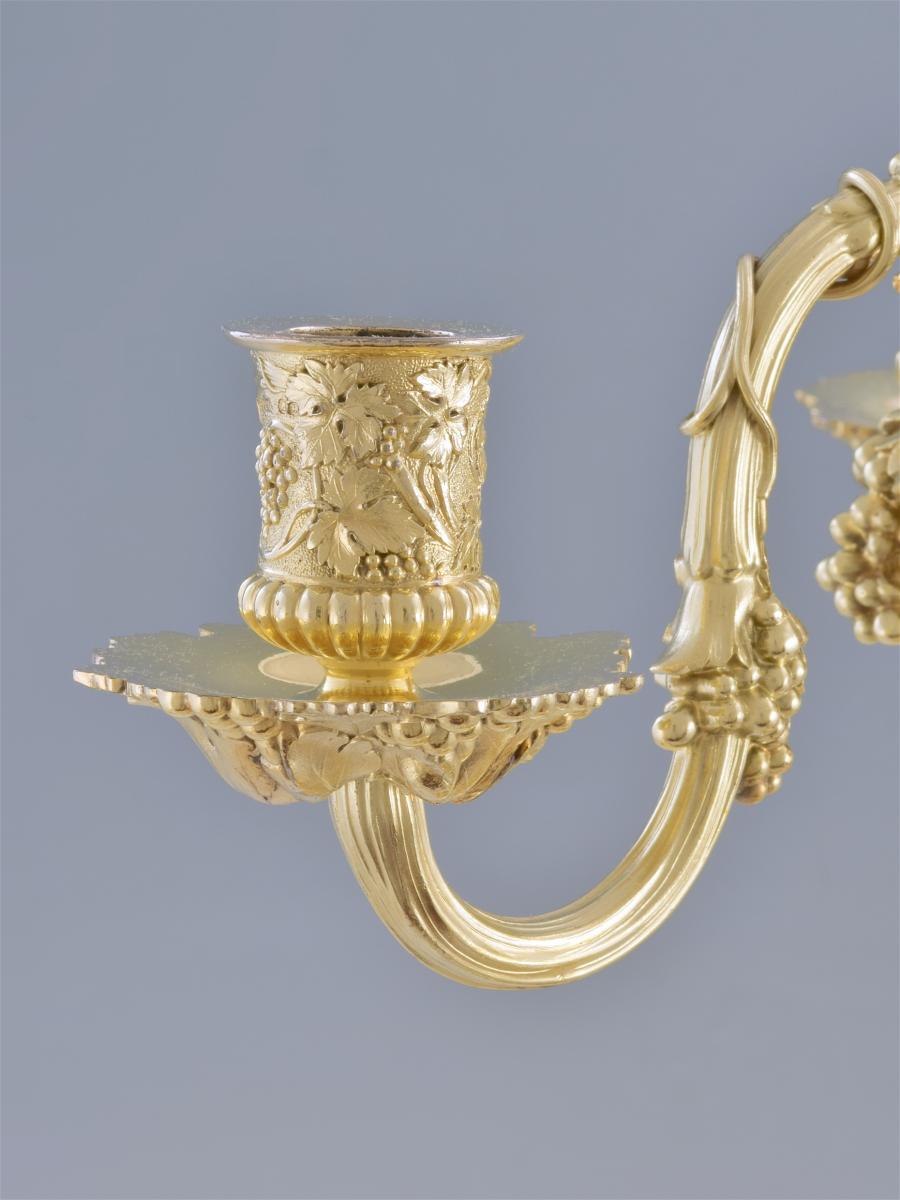

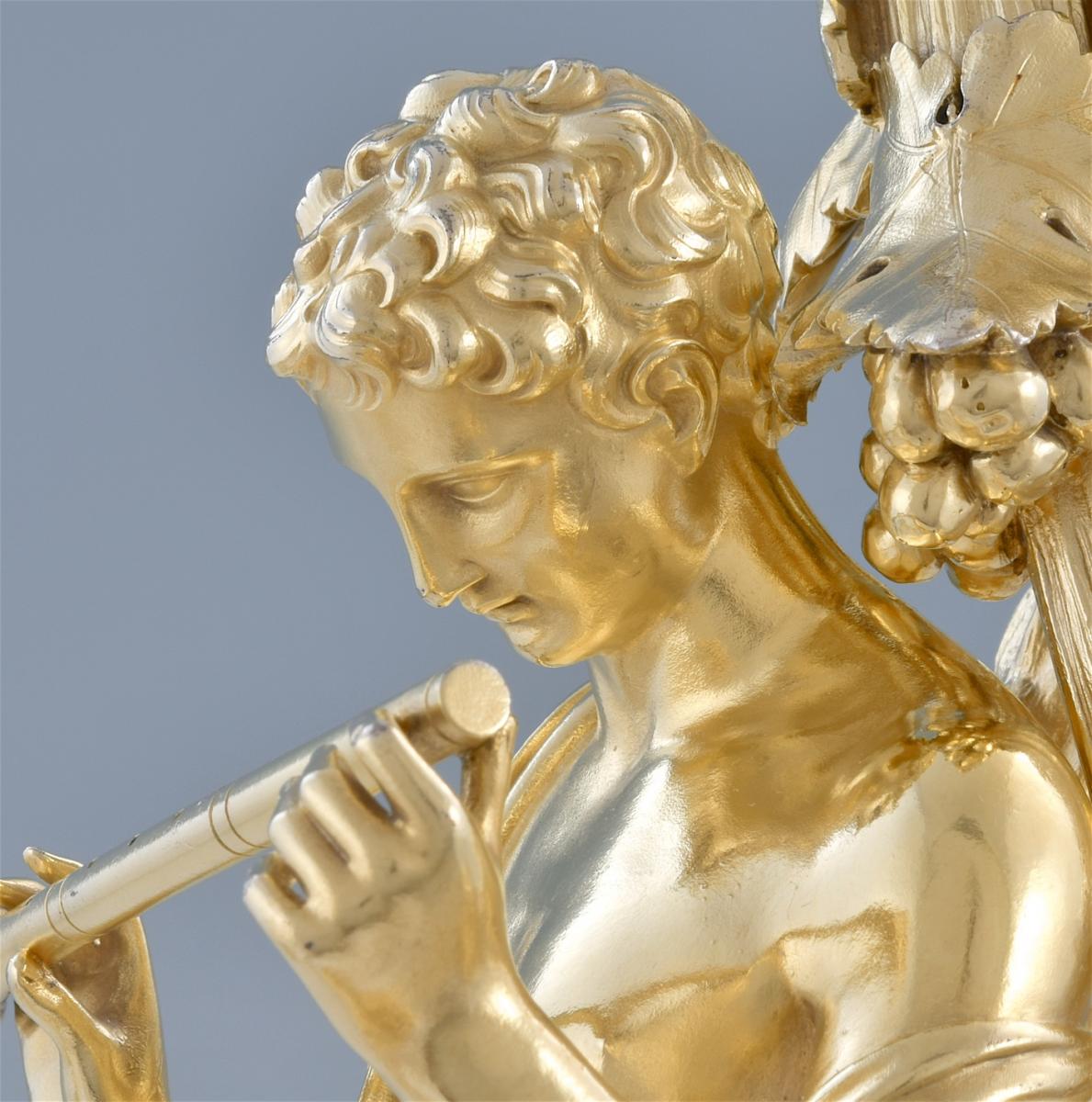
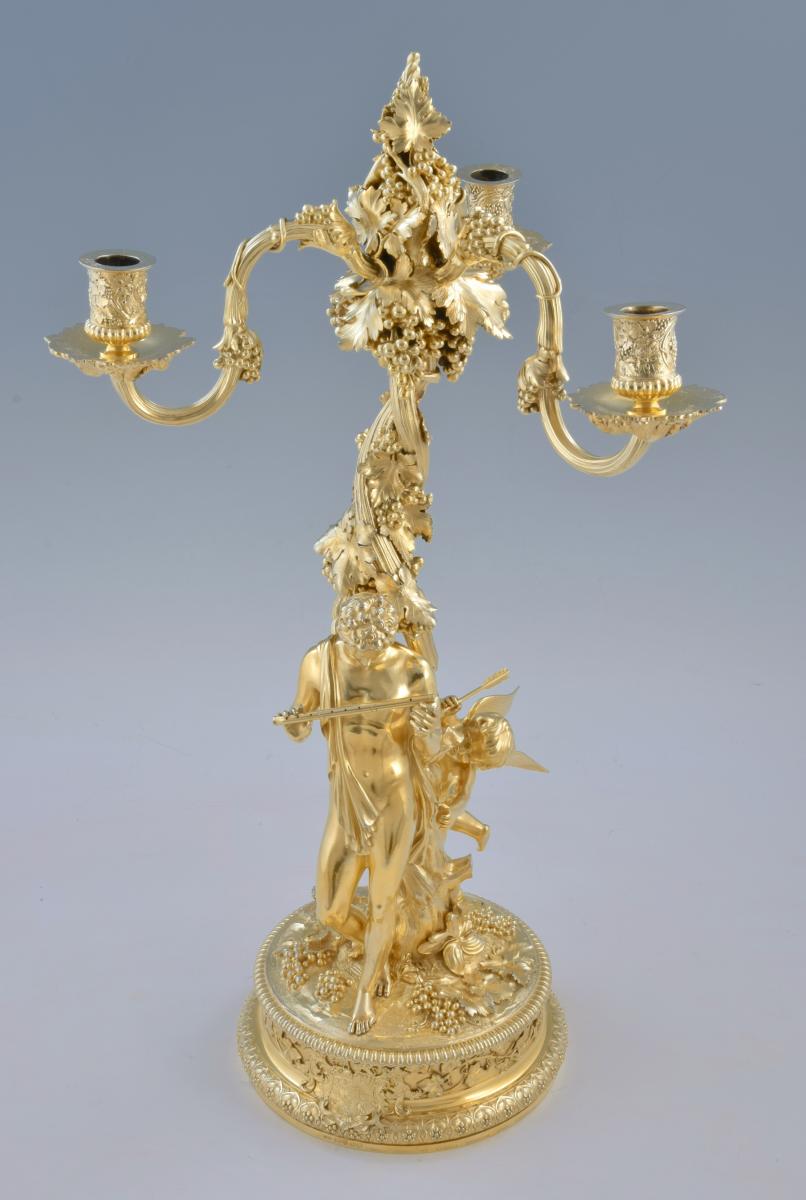
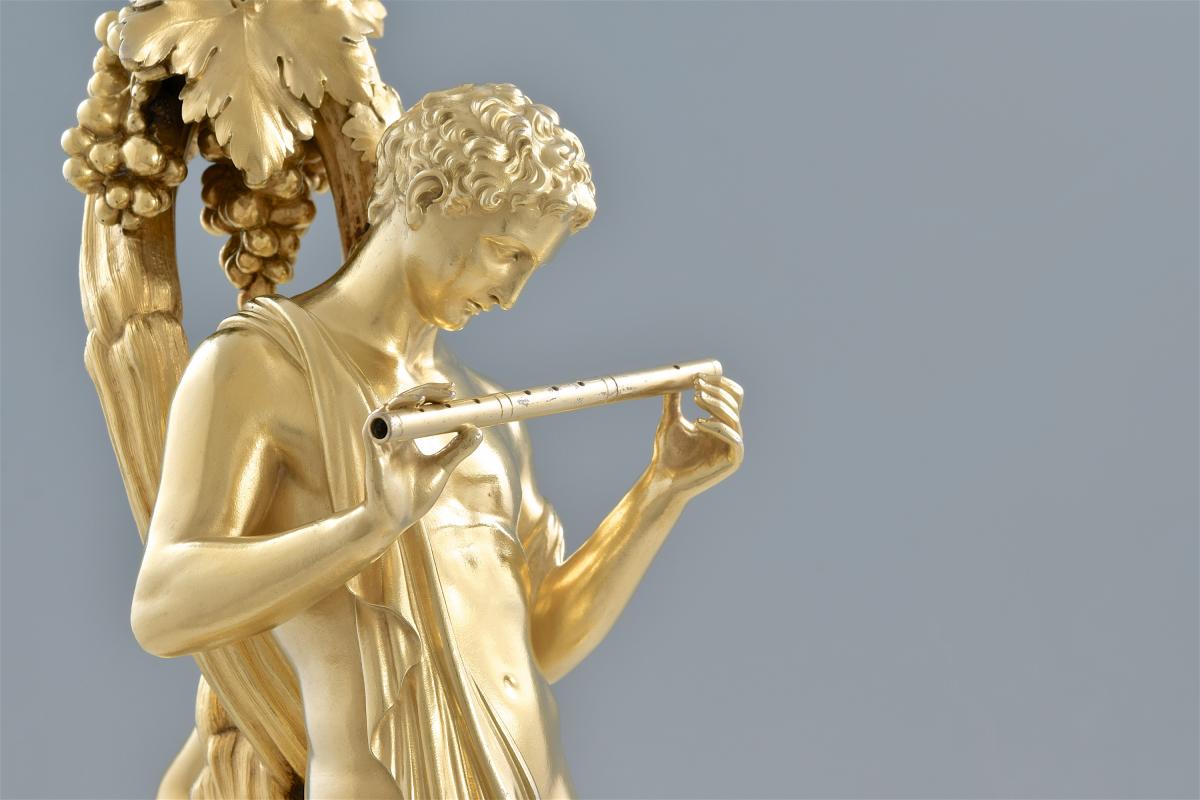
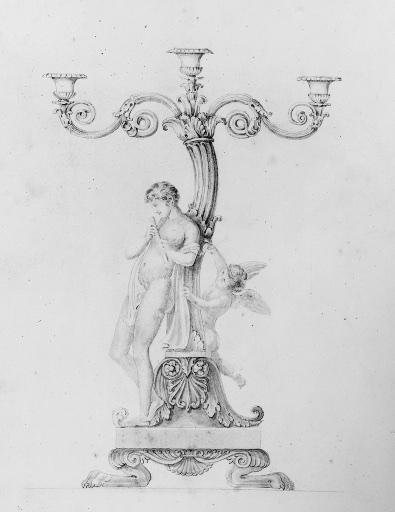
Price
£450000.00This object is eligible for a Certificate of BADA Provenance
The BADA Standard
- Since 1918, BADA has been the leading association for the antiques and fine art trade
- Members are elected for their knowledge, integrity and quality of stock
- Our clients are protected by BADA’s code of conduct
- Our dealers’ membership is reviewed and renewed annually
- Bada.org is a non-profit site: clients deal directly with members and they pay no hidden fees
The Watts-Russell Candelabra. Rundell, Bridge & Rundell, London 1820.
Mark of Philip Rundell, London, 1820, Retailed by Rundell, Bridge and Rundell, Based on the Designs of John Flaxman, Modelled by Edward Hodges Baily.
Each on circular base with fruiting grapevine border, the stem cast as Orpheus resting against fruiting grapvines as he is struck by Cupid with an arrow, the three branches each terminating in a grapevine cast socket and wax-pan, the base applied with a coat-of-arms, the sockets and wax-pans each engraved with two crests, marked on base, on branches, sockets, wax-pans and applied coats-of-arms, the bases further stamped 'RUNDELL BRIDGE ET RUNDELL AURIFICES REGIS LONDINI'.
24 in. (61 cm.) high.
423 oz. (13,151 gr.)
The arms are those of Russell quartering Watts with those of Watts in pretence for Jesse Watts-Russell (1786-1875) of Ilam Hall, Staffordshire.
An almost identical pair are housed in the Royal Collection (Inventory Number 49178).
Philip Rundell (1746-1827) hallmark 1821/2, Silver gilt.
64.5 x 37.0 x 33.5 cm.
Royal Collection Inventory Number: 49178.
Acquired by George IV, King of the United Kingdom (1762-1830) bought by George IV in 1822 for £725 9s 4d.
Provenance:
Jesse Watts Russell M.P. (1786-1875), of Ilam Hall.
The Eaton Family, Toronto, Canada.
A Connecticut Collector; Phillip's, New York, 16 April 1982, lot 240.
Literature:
J. B. Hawkins, The Al Tajir Collection of Silver and Gold, London, 1983, pp. 160-161.
The Glory of the Goldsmith, Magnificent Gold and Silver from the Al-Tajir Collection, 1989, p. 192.
C. Hartop, Royal Goldmsiths, The Art of Rundell & Bridge 1797-1843, 2005, p. 73, fig 63, cat. no. 44.
C. Hartop, "Royal Goldmsiths, The Art of Rundell & Bridge 1797-1843" The Magazine Antiques, June, 2005 .
Exhibited
London, Christie's, The Glory of the Goldsmith, Magnificent Gold and Silver from the Al-Tajir Collection, 1989, no. 147.
Jesse Watts-Russell
Jesse Watts-Russell was the son of Jesse Russell (1743-1820) of Newcastle-under-Lyme, who had made a fortune through the manufacture of soap. He married as his first wife Mary (d.1840), daughter and heiress of David Pike Watts of Portland Place, London and cousin of John Constable, the artist. He subsequently assumed by Royal License in 1817 the additional surname and arms of Watts. He was to marry twice more, in 1843 Maria Ellen (d.1844), daughter of Peter Henry Barker of Bedford and in 1862 Martha, daughter of John Leech of Wexford.
These candelabra would have been commissioned for use in the dining room of Ilam Hall, the large Gothic Revival house built for Watts-Russell by the builder and engineer James Trubshaw (1777-1853) to the designs of the architect John Shaw (1776-1832). The house was sold after Watts-Russell's death in 1875, but Biggin Hall in Northamptonshire, another of his houses, has remained in the family. Ilam Hall only survives in fragmentary form, as does the memorial cross in Ilam village, which imitates the Eleanor Crosses and which was raised in memory of Watts-Russell's first wife.
Dimensions
24 in. (61 cm.) highWeight
423 oz. (13,151 gr.)The BADA Standard
- Since 1918, BADA has been the leading association for the antiques and fine art trade
- Members are elected for their knowledge, integrity and quality of stock
- Our clients are protected by BADA’s code of conduct
- Our dealers’ membership is reviewed and renewed annually
- Bada.org is a non-profit site: clients deal directly with members and they pay no hidden fees


